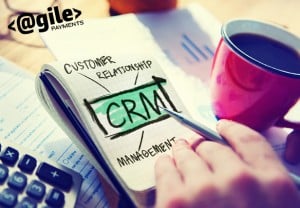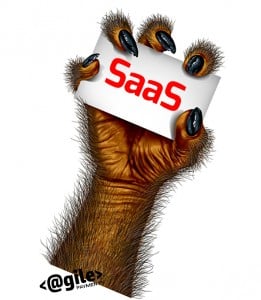SaaS startups are catching fire lately. However, SaaS poses particular challenges when it comes to valuation and marketing forecasts.
 SaaS startups tend to be more innovative and original than many other sectors. That means that there is not much pre-existing guidance for the correct use of common formulas like lifetime value and customer acquisition cost.
SaaS startups tend to be more innovative and original than many other sectors. That means that there is not much pre-existing guidance for the correct use of common formulas like lifetime value and customer acquisition cost.
Lifetime value and customer acquisition cost are popular ways to help a business determine its valuation and make predictions about how well it might do in the future under different scenarios.
This is important both for the internal use of the startup team, as a way to help them decide whether they are on track and where they should focus their attention, as well as for the use of external investors who need information to decide on how much money to put into the startup.
Lifetime value, or LTV, is one of the most common formulas in marketing. It lets a business determine how much they stand to gain from enticing one customer to buy from them.
This guides how much the company should spend on marketing. It’s also useful because without an approach like LTV, it is very hard to tie a specific amount of marketing spending to concrete benefits in the bottom line.


LTV estimates the marginal value of one more customer, and the company can then use that estimate as a starting point for how much to spend on marketing.
That accounts for why LTV is so popular in many industries.
However, SaaS startups can’t use LTV as easily as other kinds of companies. That’s because a lot of the process of calculating LTV relies on past information about the company’s sales and old customers.
An SaaS startup won’t have that kind of information because it has not been in business long enough. Let’s be more specific. The two key values that a company wants to have are LTC and customer acquisition cost, or CAC.
These are the formulas for each one:
CAC = (Total sales and marketing costs)/(number of new customers)
LTV = (Average revenue per account)*(Customer lifetime)
Notice the difficulty of LTV, in particular.


Getting a good estimate of how long customers stay loyal is hard for a company that is less than a year old. By then, it isn’t clear how long customers are sticking around.
There also aren’t enough customers in the company’s sales history to get an accurate read of the average lifetime. So SaaS startups need to get a little creative when it comes to estimating a useful value for LTV and CAC.
This illustrates the major problems with the traditional approach to LTV and CAC.
First of all, these measures are inherently static and look to the past- they are based on past estimates of sales and spending. That makes them by definition outdated, and for a fast-moving sector like SaaS, it’s critical to have information that is as up to date as possible.
Next, SaaS startups are so young that they do not have enough information to make forecasts about their customer base or how their audience will respond to changes in their product offerings.
Finally, because SaaS startups lack large and developed marketing infrastructure, it is even harder than usual to make a connection between any given marketing effort and sales outcomes.
That poses problems for CAC, which attempts to put a price tag on new customers in terms of marketing dollars.
On the other hand, the fact that SaaS startups are young and tech-heavy opens up a lot of doors for them in terms of marketing data.


SaaS startups need to tap into these tools to develop informative metrics.
Look Forward With Expectations
From a conceptual perspective, the most straightforward way to translate past information into projections about the future is taking expectations.
That lets you weigh your spending on marketing and bringing in new customers by your chances at actually succeeding at converting leads.
The result is a measure of CAC that is based on your company’s ability to make conversions and how much conversions cost the company.
First of all, start by examining the opportunities to land deals that the company has had. Multiply the number of opportunities by the percentage of opportunities that your company converted into deals.
That yields the expected number of new customers for your company based on its performance. If you divide the amount the company has spent on marketing and growth by the expected number of customers, you arrive at the expected CAC.


You can calculate this based on any time period you choose. For example, some startups use a one-month window of data, and others use three months. It depends on the length of time it takes to close a deal in your particular business area.
If you incorporate one more point of data- the average value of a contract, or ACV- you can get even more information. Take the expected CAC and divide by the ACV, and then multiply the result by 12 months.
That gives you the how many months it takes for your average contract to pay you back the amount in marketing dollars you spent to land the deal in the first place.
If your contracts are one year long, and this number is less than 12, you are in good shape, because that means you are making a profit on the average contract.
Now try the opposite of the above operation. Start from the average contract value, and then divide by the expected CAC. Skip the multiplying by 12 this time. The result will be your return on investment.
If this is over 100 percent, you are making a positive return on your growth spending.
The last step is to calculate the expected lifetime value for the company’s customers based on the same data.


Try estimating this using different values for the lifetime of customers, just in case your original estimate is wrong.
Lastly, take your expected LTV and divide by the expected CAC. As long as this ratio is above 1, the company is making more money on its average customer than it spent to acquire that customer.
The higher the ratio is, the better the businessis doing. Early on in the lifetime of a SaaS company, this ratio is likely to be below 1, because the company has to frontload all of its marketing spending, and it won’t start to enjoy the payoff from customer subscriptions until much later.
That means the ratio of value to spending should increase as the company ages.
One of the biggest advantages of this approach that uses expectations is that it is as close to real time as measurement gets. Open deals and negotiations are still counted as opportunities, and marketing spend can come from as up-to-date numbers as are possible.
It is possible to break it down to the quarterly or monthly level, or remain agnostic about time to get a snapshot of the company’s overall financial health.


As shown in this post, that’s no reason to just give up. It really helps to be able to take a business metric and make it apply to SaaS for a few reasons.
First of all, it’s a good way to make the business more appealing to investors, especially investors who are not as familiar with SaaS and startups.
The metrics are also useful internally, because they provide guidance to the company about how it should price products, how important customer retention and outreach are, and what the company needs to do to achieve growth targets in the near future.
For example, the company might learn that if it can increase its conversion rate slightly, it will achieve profitability within a few more months.
While this post provides an example of a way to take a regular business metric and put it into a SaaS startup context, there are other ways.
The key is to retain the same important information that the original metric provides and change the formula to take advantage of the data that an SaaS operator would have close to hand.


If you can achieve these goals, then you will be able to communicate with clarity about your business, and that will make internal strategy sessions smoother, appeal to a wider range of investors, and help clarify your own thoughts on the company’s health.
It takes some creativity and thinking outside the box, but so does starting up an SaaS company, so you should already be well-equipped to handle that.
It’s just another challenge of this exciting and new area of business.
Use it as an opportunity to learn.





